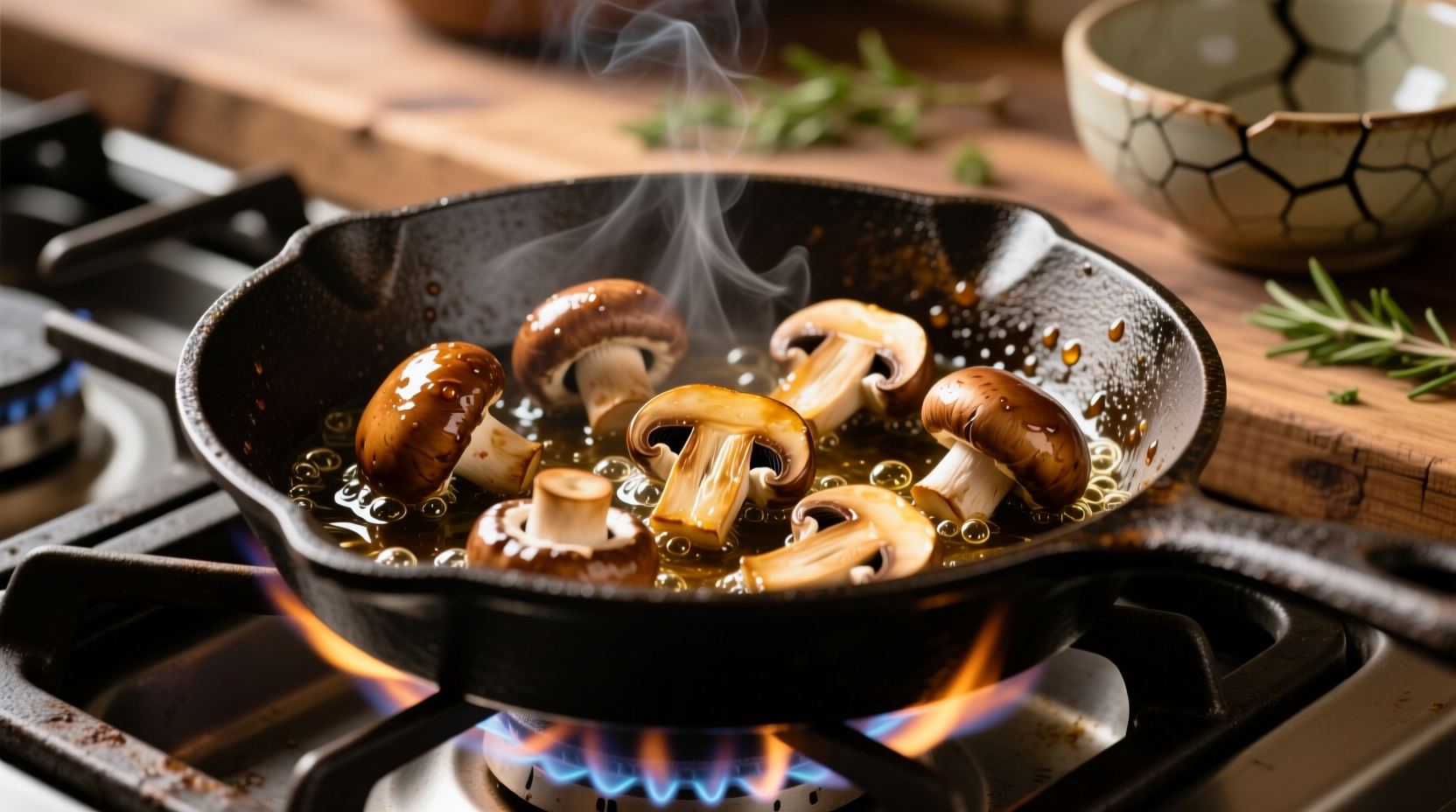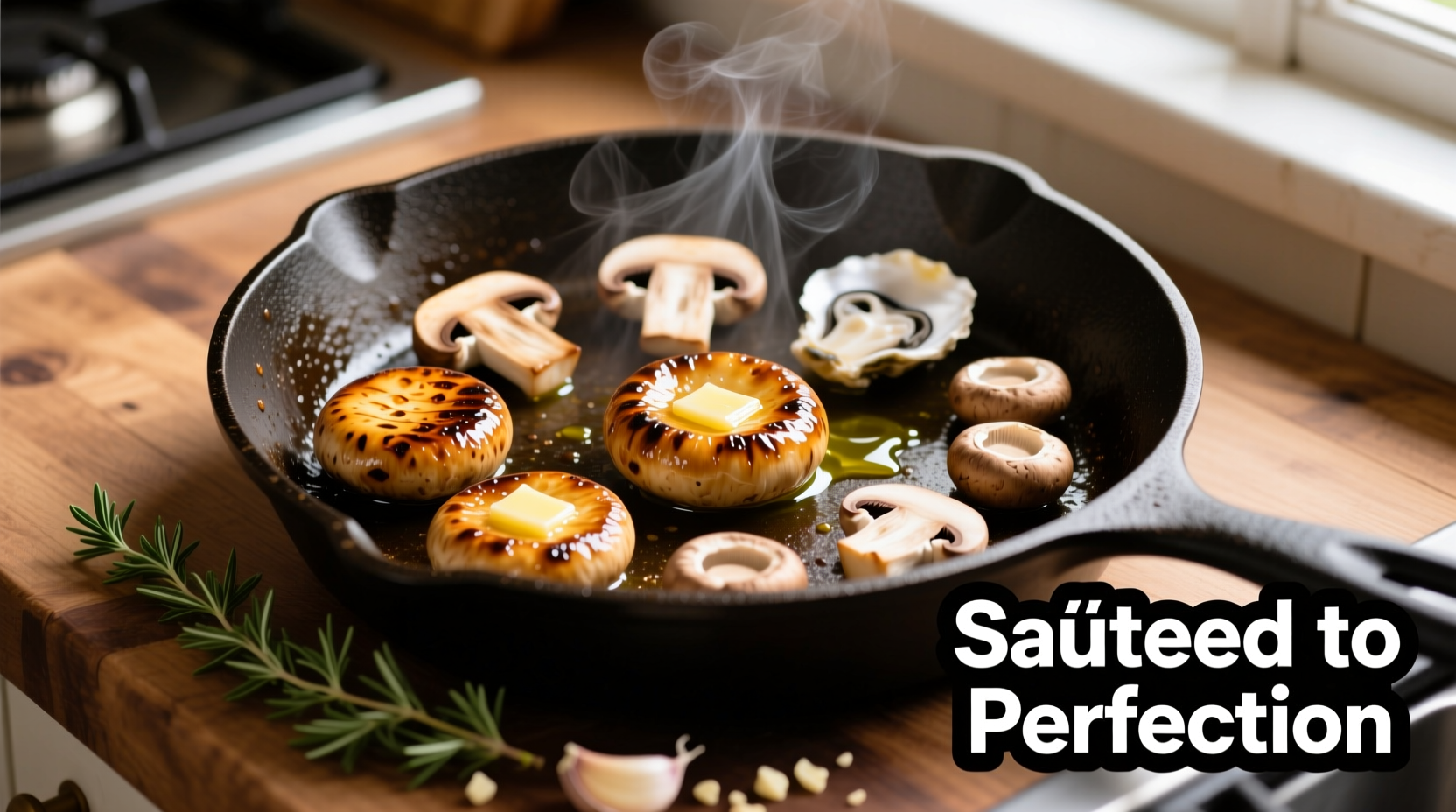The best way to cook mushrooms in a pan is to heat 1-2 tablespoons of oil or butter in a hot skillet, add cleaned mushrooms in a single layer without crowding, and cook undisturbed for 3-4 minutes until golden brown. Flip and cook another 2-3 minutes until tender. Proper heat management prevents sogginess and creates perfect caramelization.
Master Perfect Pan-Seared Mushrooms Every Time
Nothing beats the rich, earthy flavor of properly cooked mushrooms. Yet many home cooks struggle with soggy, gray results instead of the golden-brown perfection they envision. The secret lies in understanding mushroom science and applying precise heat control. This guide reveals the professional technique that transforms ordinary mushrooms into a restaurant-quality side dish or ingredient in under 10 minutes.
Why Mushrooms Demand Special Cooking Attention
Mushrooms behave unlike most vegetables due to their unique cellular structure. When raw mushrooms hit a hot pan, they immediately release water through a process called exudation. This natural moisture creates steam that prevents browning if not managed correctly. According to food science research from the USDA Agricultural Research Service, mushrooms contain 80-90% water by weight, explaining why improper cooking yields watery results.
| Mushroom Type | Best Cooking Time | Flavor Profile | Special Considerations |
|---|---|---|---|
| Cremini | 5-7 minutes | Earthy, robust | Most versatile for pan cooking |
| White Button | 4-6 minutes | Mild, delicate | Release more water than cremini |
| Shiitake | 6-8 minutes | Umami-rich, smoky | Remove tough stems before cooking |
| Oyster | 3-5 minutes | Sweet, delicate | Cook at slightly lower heat |
Your Mushroom Selection Checklist
Choosing quality mushrooms makes half the difference. Look for firm specimens with smooth surfaces and no dark spots. Avoid packages with visible moisture pooling at the bottom. Professional chefs prefer cremini (baby bella) mushrooms for pan cooking because their slightly higher density handles heat better than white buttons while offering deeper flavor.
Essential Equipment for Perfect Results
You don't need specialty tools, but the right equipment matters:
- Heavy-bottomed skillet (10-12 inch): Cast iron or carbon steel provides even heat distribution
- High smoke point oil: Avocado, grapeseed, or clarified butter (ghee)
- Metal spatula: For clean flipping without damaging mushrooms
- Paper towels: For proper mushroom drying before cooking
Step-by-Step Cooking Process
Preparation Phase: The Critical First Step
Never wash mushrooms under running water! Instead, wipe them gently with a damp cloth or paper towel. If necessary, rinse quickly in a bowl of cold water and immediately pat completely dry. Moisture is the enemy of browning. For larger mushrooms, slice to ¼-½ inch thickness for even cooking.
The Cooking Timeline: Visual Cues Matter Most
0-1 minute: Heat 1-2 tbsp oil in skillet over medium-high heat until shimmering (not smoking)
1-2 minutes: Add mushrooms in single layer with space between pieces
2-5 minutes: Cook undisturbed until golden brown on first side
5-7 minutes: Flip mushrooms and cook until second side browns
7-9 minutes: Add 1 tbsp butter, garlic, and herbs for final flavor infusion
The most common mistake? Moving mushrooms too soon. Let them develop that crucial sear before flipping. When properly caramelized, they'll release easily from the pan. If they stick, they need more cooking time on that side.

Avoid These Common Mushroom Mistakes
Understanding what not to do proves just as important as the cooking steps:
- Crowding the pan: Causes steaming instead of searing
- Adding salt too early: Draws out moisture prematurely
- Using low heat: Prevents Maillard reaction for proper browning
- Stirring constantly: Interrupts the crucial searing process
Flavor Variations and Serving Suggestions
Once you've mastered the basic technique, experiment with these professional variations:
- Classic French preparation: Finish with fresh thyme and a splash of dry sherry
- Umami boost: Add 1 tsp soy sauce during the final minute of cooking
- Creamy finish: Stir in 2 tbsp heavy cream after removing from heat
- Garlic perfection: Add minced garlic during the last 60 seconds to prevent burning
Pair pan-seared mushrooms with grilled meats, fold into omelets, or serve as a standalone side dish. They complement roasted vegetables, mashed potatoes, or polenta beautifully.
When Pan Cooking Works Best (And When to Choose Alternatives)
While pan-searing creates the best texture for most applications, understand these context boundaries:
- Best for: Small batches (under 1 pound), when you want maximum browning and concentrated flavor
- Not ideal for: Large quantities (cook in batches), when you need mushrooms for soups or sauces where texture matters less
- Better alternatives: Roasting works better for large batches; steaming suits delicate preparations like stuffed mushrooms
Storage and Reheating Tips
Store cooked mushrooms in an airtight container in the refrigerator for up to 4 days. When reheating, skip the microwave—return them to a hot skillet for 1-2 minutes to restore texture. Never freeze cooked mushrooms as they become unpleasantly rubbery.
Mastering Mushroom Cooking: The Professional Difference
What separates restaurant-quality mushrooms from home attempts isn't secret ingredients—it's understanding the science behind the process. By managing moisture release through proper heat control and avoiding common pitfalls, you'll consistently achieve that perfect golden sear with deep, complex flavor. The technique works equally well for simple weeknight sides or elegant dinner party accompaniments.











 浙公网安备
33010002000092号
浙公网安备
33010002000092号 浙B2-20120091-4
浙B2-20120091-4